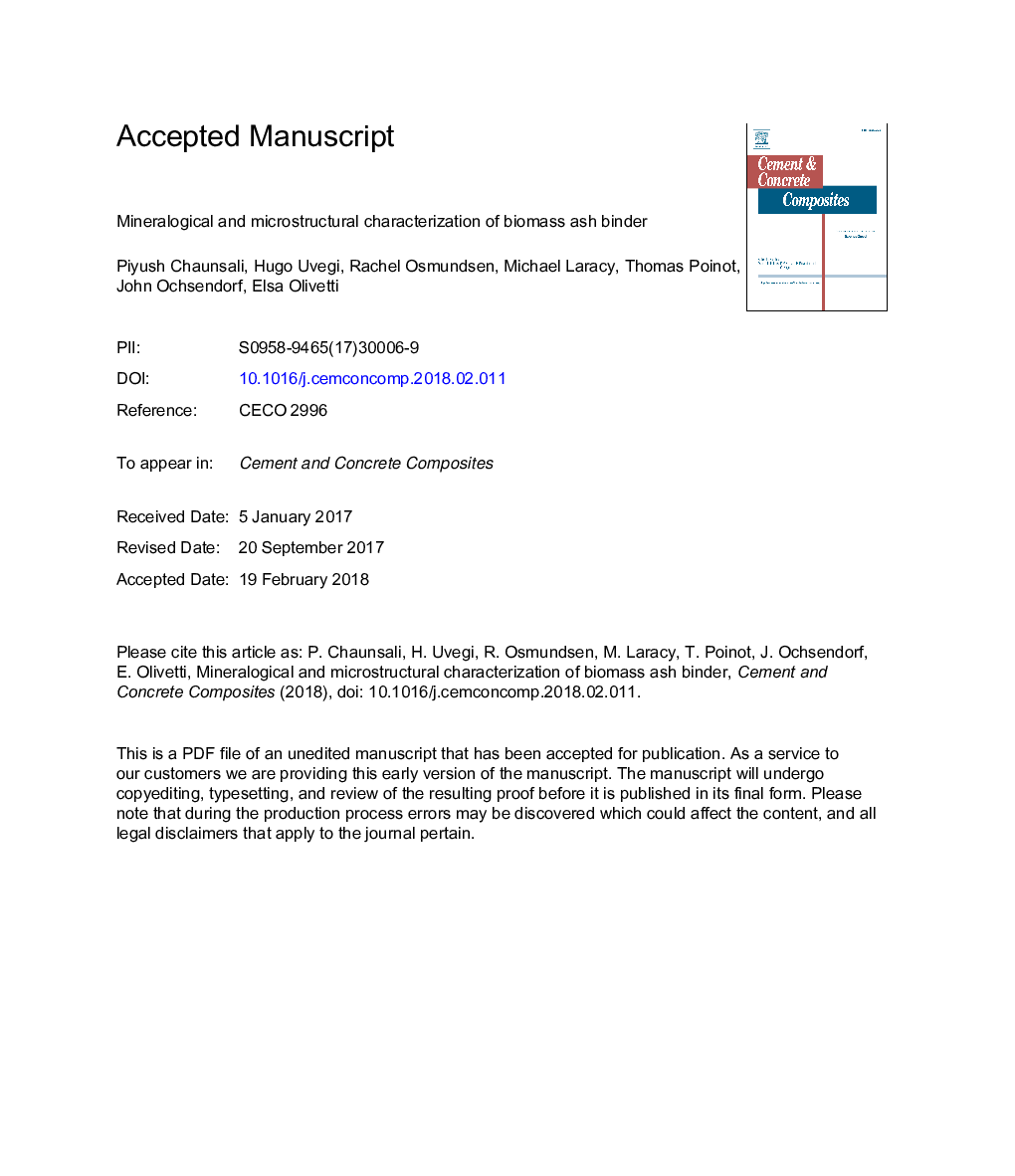| Article ID | Journal | Published Year | Pages | File Type |
|---|---|---|---|---|
| 7883686 | Cement and Concrete Composites | 2018 | 36 Pages |
Abstract
While the incineration of biomass residues is gaining traction as a globally available source of renewable energy, the resulting ash is often landfilled, resulting in the disposal of what could otherwise be used in value-added products. This research focuses on the beneficial use of predominantly rice husk and sugarcane bagasse-based mixed biomass ashes, obtained from two paper mills in northern India. A cementitious binder was formulated from biomass ash, clay, and hydrated lime (70:20:10 by mass, respectively) using 2M NaOH solution at a liquid-to-solid mass ratio of 0.40. Compressive strength of the biomass ash binder increased linearly with compaction pressure, indicating the role of packing density. Between the two mixed biomass ashes used in this study, the one with higher amorphous content resulted in a binder with higher strength and denser reaction product. Multi-faceted characterization of the biomass ash binder indicated the presence of aluminum-substituted calcium silicate hydrate, mainly derived from the pozzolanic reaction.
Related Topics
Physical Sciences and Engineering
Engineering
Industrial and Manufacturing Engineering
Authors
Piyush Chaunsali, Hugo Uvegi, Rachel Osmundsen, Michael Laracy, Thomas Poinot, John Ochsendorf, Elsa Olivetti,
